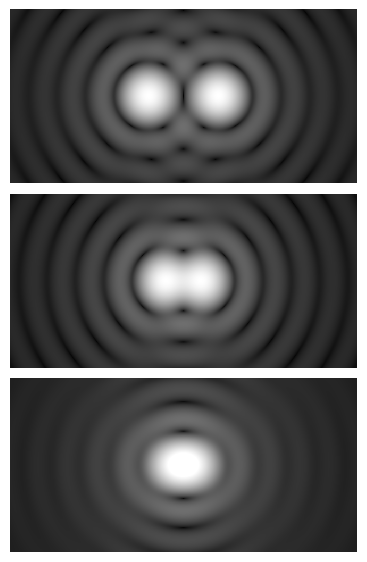Dr. Rowbotham postulates that disappearing due to perspective occurs at "the angular limits of the eye", asserting that the angular limit is around 1 arcminute.
Who is arguing? Though to be precise that angular limit of around 1 arcminute is not as Rowbotham postulates the "vanishing point" due to perspective but the typical resolution limit.
Have a look at
Notes on the Resolution and Other Details of the Human Eye.
And more:
The Limits of Human Vision
Highest resolution perceivable pixels: 28 seconds of arc.
Several physical factors limit the highest spatial frequencies that can be perceived by the human eye. The diffraction limit of the pupil, the foveal cone spacing, neural trace and physiological tests all agree on a maximum perceived frequency of approximately one cycle per arcminute (half arc-minute pixels). This is under optimal conditions, including100% contrast. While not quite directly comparable, so-called “20/20” vision represents detecting image features twice as large
From: The Limits of Human Vision, Michael F. Deering
I disagree with Round Earthers that disappearing from perspective is completely ridiculous. I can actually name the Airy disk as a mechanism for it.
What do you base your claim on that "Round Earthers" think "that disappearing from perspective is completely ridiculous"?
All we disagree with is claims that the ships, buildings and even the sun and moon disappear due to perspective rather than being hidden behind "something".
The Airy disk is a pattern of rings created by diffraction. For the human eye in bright light, the limit is about 1 arcminute. Additionally, multiple point sources of light can appear to merge like so:

But an
Airy disk is a limit on the spot size determined by the wavelength of the light. The resolution of the eye or a camera is determined by the spacing of the receptor cells (or pizels).
Given this mechanism, I can hypothesize the following:
- An object close to disappearing due to perspective should be significantly blurred.
- There should be a pattern of rings, if it is indeed blurred from the Airy disk.
Yes, if it's due to the Airy disk.
This so-called 1 minute of arc is not a limit of visibility, just a limit on the eye's ability to separate objects, as illustrated in your photos.
There is no lower limit to the size object that can be seen provided there is enough contrast between it and the background and the eye receives enough light from it.
How Far Can the Human Eye See a Candle Flame?
Answers on the Web vary from a few thousand meters to 48 kilometers.
Now a pair of physicists have carried out an experiment to find out.
See the details in: How Far Can the Human Eye See a Candle Flame?
The result claimed is:
We show that a candle flame situated at ~2.6 km (1.6 miles) is comparable in brightness to a 6th magnitude star with the spectral energy distribution of Vega. The human eye cannot detect a candle flame at 10 miles or further, as some statements on the web suggest.
A 6th magnitude star is regarded as about the limit of unaided vision.
Guessing the candle flame as 15 mm high x 5 cm wide, its angular size would be: 0.02 x 0.007 minutes of arc -
far smaller than the resolution limit of the eye.This is just a quick example, but the visibility distance of a bright object against a dark background is limited only by the brightness.
Now what Globe supporters object to is the flat earthers' claims than the sun and moon can disappear and appear to set due to perspective.
The moon, for example, is supposedly about 50 km in diameter and when setting would typically be about 15,000 km away, so its angular size would be about 11 minutes of arc, so should easily be visible.
But what is so wrong with even this is that when overhead the angular size of the moon averages about 31 arcminutes and that size is virtually unchanged when it is setting - where's your "perspective"?